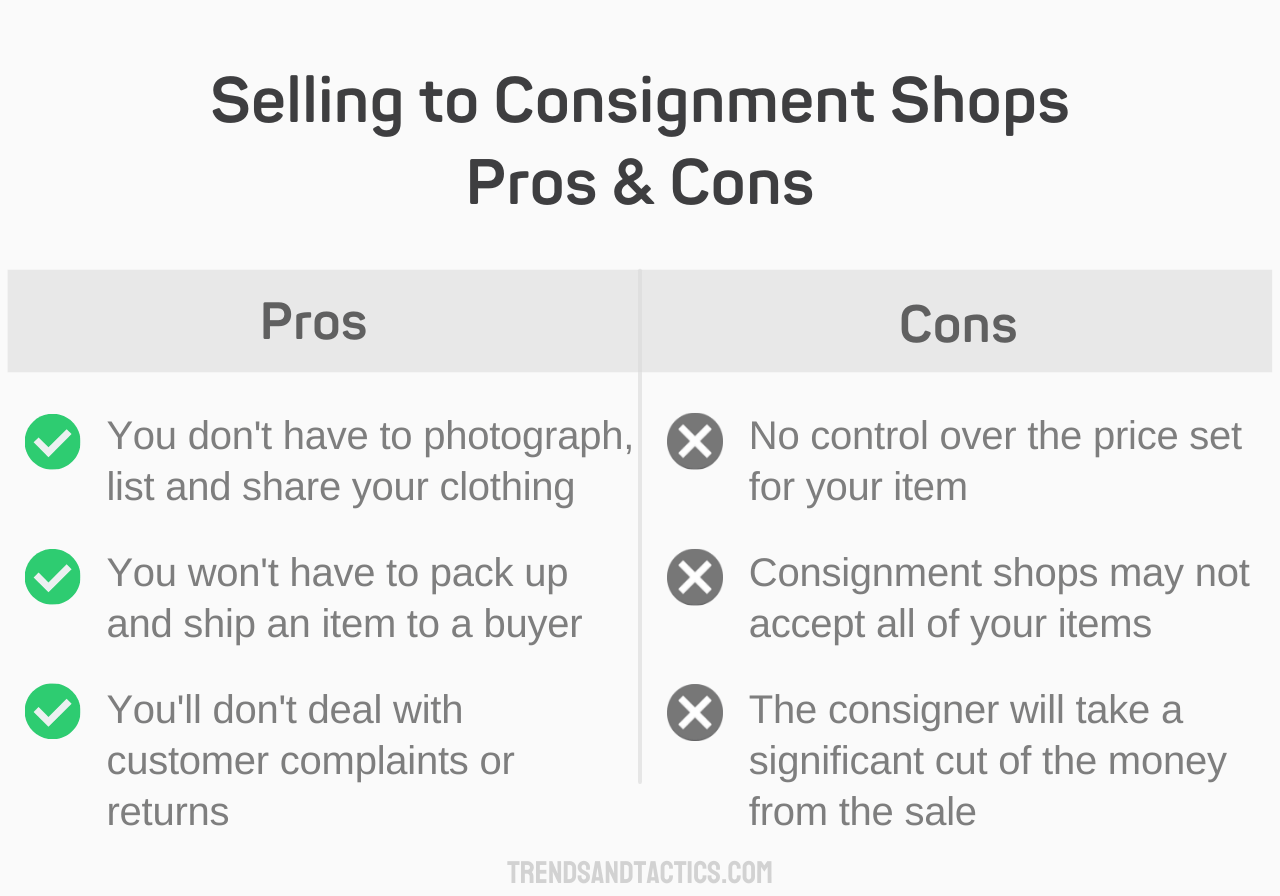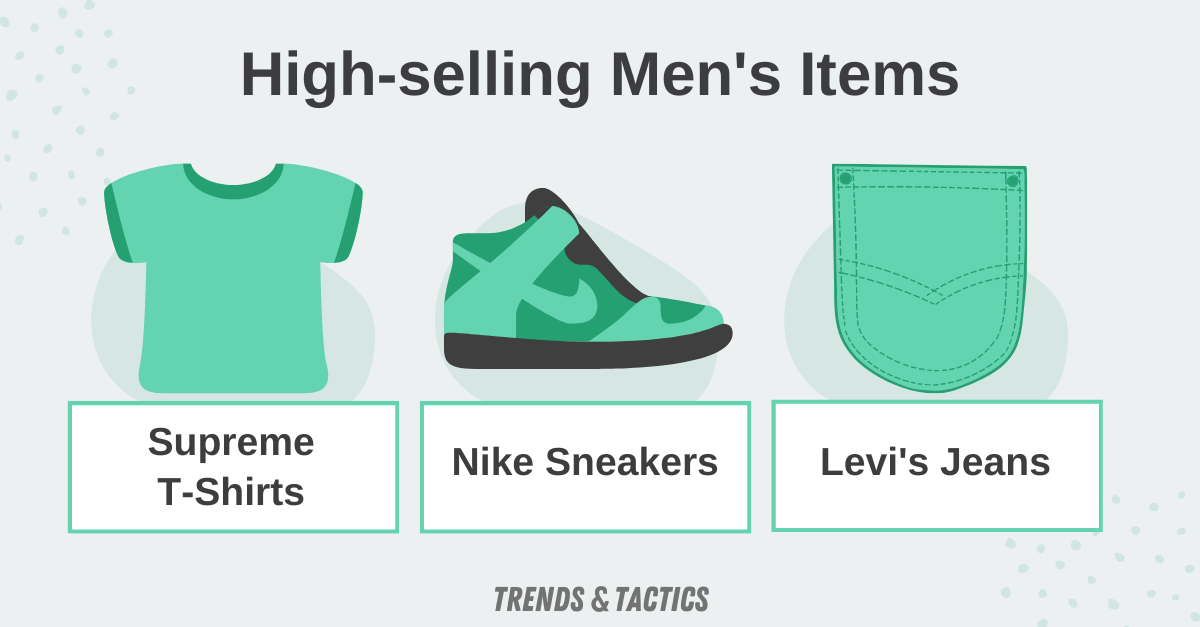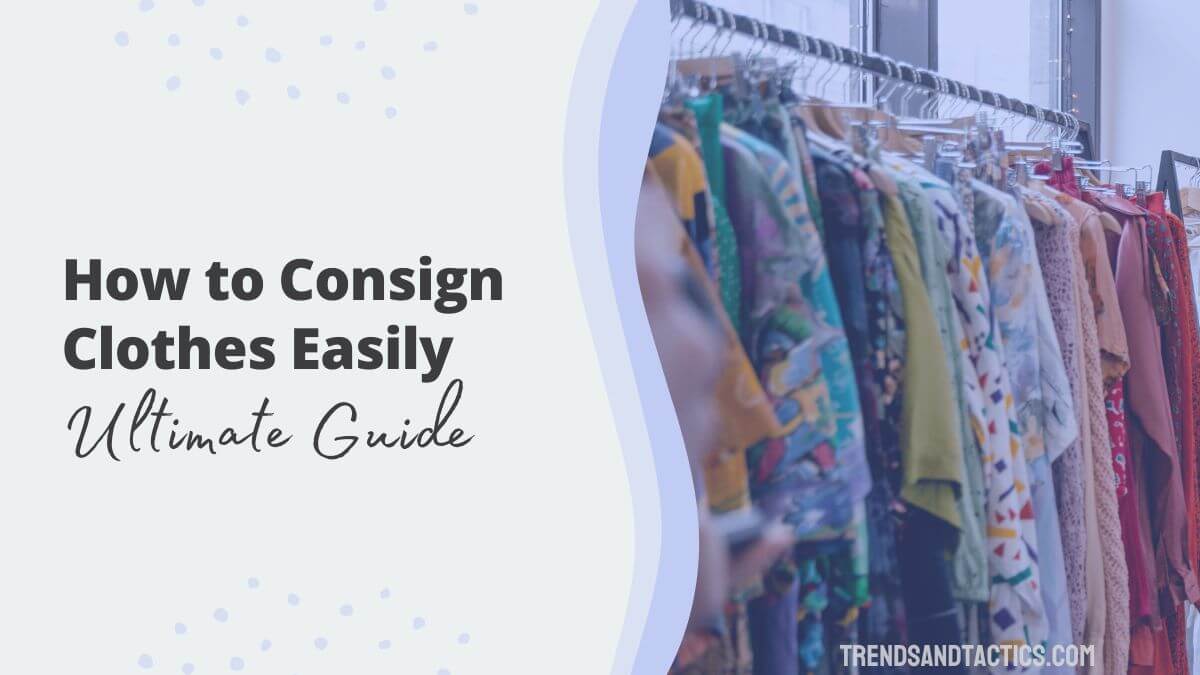An overflowing closet isn’t just a sign that it’s time for a purge; it can also be a source of extra cash.
If you learn how to consign clothes, you can make back a chunk of the money you spent on your original purchase.
But, it’s not easy to sell to consignment shops. Stores often have strict rules about what they’ll accept. This guide will share tips to help you get the most money possible out of your old stuff.
How do clothing consignment shops work?
Consignment shops operate as a liaison from clothing owners to potential secondhand customers and help anybody make money selling their clothes even if they don’t have any retail or e-commerce experience.
This means you don’t need to learn about shipping clothes or selling clothes on eBay.
The owners and employees at these shops are well versed in reselling, and their brick-and-mortar brand exposure draws in a steady crowd of customers who trust them as a source of quality, authentic pre-owned clothing.
Trend on the Rise
About half of secondhand dollars will come from online resale by 2024. Consider shipping your luxury items to online consignors like The RealReal, and lower-end pieces to ThredUP. However, these services’ payout is likely lower than a brick-and-mortar store.
How consignment store owners get their inventory varies greatly, but most accept drop-ins or appointments from consignors, who bring in their unwanted clothing for inspection.
If the staff wants to sell what you have, you’ll strike a deal and receive money in exchange for your clothes.
Consignors typically are in charge of deciding what is a fair consignment percentage.
However, the process of getting clothing accepted is more complicated than people realize. Shops look exclusively for specific brands and seasons and want pieces in perfect or nearly perfect condition.
Inspect a store’s website to get a better idea of what clothes they wish to consign, find out if you need to make an appointment, and learn the correct way to drop your items off (many have rules about bringing your clothes on a hanger or in a basket.)
Tactic for Success
If a store has many employees, don’t give up if one doesn’t immediately accept your items. Revisit the store during a different time of day when another employee is working. Workers have different tastes and standards for what they’ll agree to consign.
Selling to Consignment Shops Vs. Selling Online
If you sell your clothes to a consignment shop, you’ll probably make significantly less money than you could if you opted to sell your clothes from an online marketplace like Poshmark, eBay or Mercari.
The clothing resale platform Poshmark takes just 20% of every sale or $2.95 for any sale under $15.
If you are interested in more than just cleaning out your closet, you can make extra money by learning places to buy clothes to flip.
Selling online is competitive and might entail more time and effort than you’re willing or able to give.

What percentage do most consignment shops take?
When it comes to determining what is a fair consignment percentage, many different factors come into play.
The one that will have the most significant impact on your earnings is how quickly you want to get your hands on the money.
Keep in mind that the overall resale value of most clothing items is generally 70% off of retail price, except for designer goods or limited-release items that retain their value or may even increase in value if demand exceeds supply.
Clothes for cash immediately
Some consignment stores — notably, larger brick-and-mortar retail chains like Plato’s Closet, Clothes Mentor and Buffalo Exchange will offer their sellers immediate clothing for cash exchange before the items have been put out for sale or sold.
If you’re wondering how much Plato’s Closet gives for clothes, in these situations, your cut of the sale is only about 30% of what the item sells for typically.
Paid only after clothes sell
Smaller mom-and-pop shops operate on a slower cash-out basis, requiring an item to sell before you see any money.
It can be a much more complex process, and you won’t be entirely sure exactly how much you’ll make as the item will likely be discounted the longer it sits on the shelves untouched.
If you’re lucky, you may be able to negotiate a 40/60 split for this exchange, meaning you’ll take home 60% of what an item sells for.
If you sell your clothes to a consignment shop, you’ll likely make significantly less money than you would if you opted to sell your item on an online marketplace.
Popular clothing resale platform Poshmark takes 20 percent of every sale or $2.95 for any sale under $15.
However, selling online is competitive and requires more time than some are able to give to make a sale.
Tactic for Success
Many fast fashion brands print a style number and manufacture date on the inside tag of their clothing, near the fabric content label. Most stores only accept fast fashion pieces that are a few years old. If yours is older, it may be better to donate or try selling yourself.
What items sell best on consignment?
There’s a massive market for your old stuff. According to online consignment store ThredUP, 74% of consumers have shopped secondhand or are open to shopping for secondhand apparel.
The U.S. used goods market is predicted to more than double by 2026.
Trend on the Rise
Many companies have created buyback and resale programs, including Lululemon, Patagonia, and Eileen Fisher. If you own something from these brands, it likely has a high enough resale value to do well in a consignment shop.
The hot items of the moment are ever-changing as certain styles come back in fashion and the seasons change.
However, certain brands are so popular that many of their pieces are in demand year-round for customers looking to own them at a fraction of the price.
High-selling women’s consignment items:
- Louis Vuitton Everything – Bags, shoes and accessories by this brand not only resell close to their original price, they often appreciate.
- Gucci Pieces – Bags, belts and shoes retain value and are typically sold just below retail price.
- Lululemon Athletica Unicorns – Leggings, sweatshirts and jackets generally sell for more than half their retail price. “Unicorn” or limited edition items may sell for more than retail.
- Nike Gear – Shoes and new seasonal workout apparel are popular in many consignment stores; some sell significantly more than others.
- Free People Trending Styles – This brand’s latest coats, dresses and accessories typically do well in stores geared toward younger shoppers.

High-selling men’s consignment items:
- Nike Sneakers – some shoes can be worth a small fortune and should only be sold to sneaker resale stores to get the highest resale value.
- Patagonia Seasonal Apparel – Puffer jackets, coats, and fleece pullovers sell quickly for about half their retail price or higher. Swim trunks and summer gear can also sell quickly.
- Supreme T-shirts – Anything with this brand’s logo is hot on the secondhand market.
- Adidas Gear – Shoes, hoodies and streetwear collaborations that are limited edition sell well in consignment stores.
- Levi’s Jeans – The 100% cotton versions of this closet staple are accepted by many consignment stores as their jeans are always in demand.
How do I sell an item on consignment?
To successfully sell items on consignment, you should do your research. Find a store in your area that sells things like the ones in your closet.
If you own luxury brands, take your items to a high-end specialty consignment store to get the most money from your articles.
Conversely, if you purchase your clothing from stores commonly found in most retail malls, you will have the best luck getting your items accepted at a store that buys and thrives on fast fashion pieces.
The best thing you can do to increase your chances of having pieces accepted for the highest amount of money is to ensure they are clean, wrinkle, and stain-free.
You can refresh sweaters or knits by using a sweater shaver or razor blade to remove pilling, and shoes need a good cleaning and should look new or nearly new.
Please resist the urge to dose your stuff with perfume or Febreeze to make them more appealing; heavy scents can cause some allergic reactions and make pieces unworthy of consignment.
Wrapping Up
The choice depends on your lifestyle and how much time you’re willing to invest in getting money out of your old clothes.
If you’re hoping to get the most money out of your clothes, you should cut the middleman and try selling your pieces directly to a customer.
Nikki Davidson is a freelance TV and print journalist who covers finance and real estate news for media outlets across the country. She's also a chronic side-hustler and YouTuber who creates videos about reselling clothing online (Channel Name: Sew Much 2 Wear).






